

We all know that citing our sources is important, but it's not always clear how to do it properly.
After all, there's so many types of citation styles!
Not citing your sources can lead to all sorts of problems, from getting marked down in essays and research papers to getting accused of plagiarism. This could even make your work illegal in some cases!
Fret not, our blog on oxford referencing style guide will take you through the basics of how to cite for books, articles, and more. Plus, we've got templates and examples so you can get started quickly and easily.
What’re you waiting for? Jump to the type of source you want to create an oxford style citation for.
On This Page![]()
- 1. What Is Oxford Referencing?
- 2. How to do Oxford Referencing Style?
- 3. Oxford Citation Style Rules and Guidelines
- 4. Oxford In-Text Referencing
- 5. Oxford Referencing Website
- 6. Oxford Style Referencing Bibliography
- 7. Oxford Referencing Book
- 8. Oxford Style Footnotes
- 9. Oxford Referencing Example
What Is Oxford Referencing?
The Oxford referencing style, initially designed for law students, includes specific rules that shape how you format your paper. It's sometimes called the documentary-note style.
It's composed of two parts: footnotes at the bottom of the page and a reference list at the end of the paper.
While it shares similarities with the Chicago style due to the use of footnotes, it has its unique style and format for various source types.
In the sections below, we'll delve into the key aspects of Oxford referencing.
How to do Oxford Referencing Style?
Oxford referencing style provides a structured and organized way to give proper credit to the sources you use in your research and academic papers.
If you're new to Oxford referencing, don't worry. We'll walk you through the key components and steps to follow:
- Understanding the Two Parts
Oxford referencing comprises two main components: footnotes and a reference list.
- Footnotes: In the text of your paper, use superscript numbers (like this^1) to indicate when you've used information from a source. These superscript numbers correspond to footnotes placed at the bottom of the same page or at the end of each chapter. In the footnote, you provide full details of the source, including the author's name, title, publication details, and page numbers.
- Reference List: At the end of your document or paper, compile a list of all the sources you've cited. This list should follow a specific format and include all the necessary details for each source.
- Citing Books
When citing a book using Oxford referencing, note the following format:
- Author's First Name
- Last Name
- Title (Publication Place: Publisher, Year)
- page number.
- Citing Journal Articles
When citing a journal article, use the following format:
- Author's First Name
- Last Name,
- "Title of the Article,"
- Journal Name volume,
- no. (Year): page number.
- Citing Websites
Citing websites is slightly different. You need to include the author (if available), the title of the web page, the full URL, and the access date. The format is:
- Author's First Name
- Last Name,
- "Title of the Web Page,"
- Website Name,
- publication date or access date,
- URL.
- Consistency is Key
Maintain consistency throughout your paper. Make sure your footnotes and reference list entries follow the same format and style.
- Use Citation Software
To simplify the process, consider using citation management software such as EndNote or Zotero. These tools can help you automatically format your citations in the Oxford style.
Oxford Citation Style Rules and Guidelines
The Oxford citation style, developed by the University of Oxford, is precise and structured. Here are the essential rules:
- Use superscript numbers in the text for footnotes, indicating sources.
- Footnotes contain full details, including author, title, publication info, and page numbers.
- Compile a reference list at the document's end, following a specific format.
- For website citations, include author, web page title, website name, publication date or access date, and URL.
- Maintain a uniform citation style throughout your work.
- Verify all details for accuracy, including authors' names and publication years.
- Utilize oxford referencing generators like EndNote or Zotero for automated, error-free citations.
Oxford In-Text Referencing
Instead of in-text citations, footnotes are used in an Oxford-style paper. While typing, a superscript number is added with the word or phrase you are picking from any other source. This number is added in a footnote at the bottom of the page the phrase is mentioned on.
"In recent years, there has been a growing concern about the impact of climate change on global agriculture3." |
The sentence "In recent years, there has been a growing concern about the impact of climate change on global agriculture^3" showcases the Oxford in-text citation style, where the superscript number "3" is appropriately positioned after the statement. This in-text citation is typically followed by a corresponding entry in the footnote or endnote section of the paper, providing more detailed source information.
Oxford Referencing Website
The Oxford referencing style is not limited to books and articles; it also extends to citing online sources, including websites.
Here's how to correctly cite websites in the Oxford referencing style:
- Author's Name: If available, provide the author's first name and last name.
- Title of the Web Page: Enclose the title in single quotation marks or apostrophes.
- Website Name: Mention the name of the website where the web page is located.
- Publication Date or Access Date: If there's a publication date on the web page, include it. If not, use the date you accessed the website.
- URL: Include the full web address (URL) of the page.
Check out the footnote oxford referencing style example website pattern:
"A. Author, 'Title of web section/article/document', Title of website [medium], day month year, page/paragraph/section name, , accessed day month year." "9. S.Black, 'Kevin Andrews prods the Sudanese in the woodpile', Crikey [website], 9 June 2007, para. 4,<http://www.crikey.com.au>, accessed 3 May 2014." "10. M. Specter, 'The dangerous philosopher', The graduate forum NYU [website], 2 Apr. 2001, para. 8, <http://www.cns.nyu.edu/~pillow/gradforum/materials/DangerousPhilosopher.pdf>, accessed 3 Feb. 2014." |
After adding the footnote, you will need to add its bibliographic reference in the bibliography list. However, the pattern is different from the footnote.
"Author, A, 'Title of web section/article/document', Title of Website [medium], day month year, <URL>, accessed day month year." "Black, S., 'Kevin Andrews prods the Sudanese in the woodpile', Crikey [website], 9 June 2007,<http://www.crikey.com.au>, accessed 3 May 2014." "Specter, M., 'The dangerous philosopher', The graduate forum NYU [website], 2 Apr. 2001,<http>//www.cns.nyu.edu/~pillow/gradforum/materials/DangerousPhilosopher.pdf>, accessed 3 Feb. 2014." |
In Case of Two to Three Writers
These works usually include research works and research articles. When citing works from two or three writers, the last name is separated with an ampersand. In case of adding a footnote, follow the below pattern:
23. F.S. Kleiner, C.J. Mamiya & R.G. Tansey, Gardner's art through the ages, 11th edn, Harcourt College Publishers, Fort Worth, 2001, p. 38.' When formatting a bibliography entry, follow the below pattern: 'Kleiner, F.S., Mamiya, C.J. & Tansey, R.G., Gardner's art through the ages, 11th edn, Harcourt College Publishers, Fort Worth, 2001.' |
In Case of More than Three Authors
In the case of multiple writers, add the last name of the first writer and add ‘et al’ after it. In such a case, format the footnote in the following style:
'36. E. Arnau et al., 'The extended cognition thesis: its significance for the philosophy of (cognitive) science', Philosophical Psychology, vol. 27, no. 1, Feb. 2014, p. 14, Academic Search Complete [online database], accessed 16 June 2014' When making the bibliography of the footnote entries, use the following format: 'Arnau, E. et al., 'The extended cognition thesis: its significance for the philosophy of (cognitive) science', Philosophical Psychology, vol. 27, no. 1, Feb. 2014, pp. 1-18, Academic Search Complete [online database], accessed 16 June 2014.' |
Organizations or Group Authors
Besides independent and individual writers, various organizations and government agencies also publish their various publications. The elements added in the footnotes and bibliography are the same. The difference is that the footnote includes the page number of the book or the journal and the superscripted number.
For example:
"1. Parliamentary Standing Committee on Public Works, Proposed common use infrastructure on Christmas Island, Parliament of the Commonwealth of Australia, Canberra, 2002, p. 52.' |
For the bibliography:
'Parliamentary Standing Committee on Public Works, Proposed common use infrastructure on Christmas Island, Parliament of the Commonwealth of Australia, Canberra, 2002.' |
When there is No Writer
The footnote starts with the title of the work and moves forward with the publisher. It also includes the date on which the source is accessed and whether it is printed or online.
When making the footnote, follow the below style:
| ‘5. The remedy of love, Chadwyck-Healey, Cambridge, UK, 1995, EnglishPoetry Full-text [online database], accessed 15 Dec. 2013.' |
When making the bibliography entry of such an in-text, mention the writer as ‘Anon’ or ‘Anonymous’.
'Anon., The remedy of love, Chadwyck-Healey, Cambridge, UK, 1995, English Poetry Full-text [online database], accessed 15 Dec. 2013.' |
Source without the Date of Publication
Is no date available with the source? Citing sources without publication dates becomes troublesome, but there is a way of doing it.
If the source is without a publication date, then use the copyright date. If no date is available, then add n.d. instead of it.
When preparing the footnote of such a source, follow the below method:
‘23. P. Jones, The hanging hypothesis, Metzger & Son, New York, n.d., p. 14.' |
To prepare the bibliography of the source, use the following format:
'Jones, P. The hanging hypothesis, Metzger & Son, New York, n.d.' |
Citing the Secondary Sources
Secondary sources are those sources that the student has not read himself but are rather cited by another author. It is like the student is referring to someone who has been referred by another author.
To make the footnote of this kind of source, please follow the below format:
10. A. Smith, Italian architecture, Penguin, Melbourne, 2000, cited in D. Brown, Renaissance Italy, Faber and Faber, London, 2002, p. 45.' |
When making the footnote, mention both the writers. Mention the writer of the secondary source first, followed by the primary author, whose work has been cited.
When creating the full bibliographic entry of the footnote, mention the secondary work that you have read-only, for example:
'Brown, D., Renaissance Italy, Faber and Faber, London, 2002.' |
Citing Multiple Works by the Same Author
It is not uncommon for students to find multiple works by the same author while working on a research paper. However, this does not mean that these sources cannot be cited.
When trying to cite these types of sources, simply add ‘ibid’, ‘op. Cit.,’ or ‘loc. cit.,’ followed by the author's name in the footnotes when citing multiple works by one writer. This shows that the source being cited is from the same author as the previously cited source.
15. S. Žižek, Enjoy your symptom!: Jacques Lacan in Hollywood and out, Routledge, London, 2001, pp. 23-4.' … 8. S. Žižek, On belief, Routledge, London, 2001, p. 57. … 12. S. Žižek, Enjoy your symptom!, loc. Cit.' |
However, if you are citing multiple works by the same author that were published in different years, then you will need to include the year of publication for each work being cited. For example:
Smith, John. The Importance of Being Earnest. 1892. Smith, John. Pygmalion. 1913. |
Oxford Style Referencing Bibliography
In Oxford referencing, the bibliography is a list of all sources consulted, whether directly cited or not. It covers books, articles, reports, and more.
A reference list, on the other hand, includes only the sources explicitly cited in your work.
Entries are alphabetically arranged by the author's last name, followed by initials, and indented for clarity.
Usually, a bibliography is not divided into subsections. But sometimes, teachers may ask you to do it and divide it into primary and secondary sources.
Like the APA and MLA style, all the bibliography entries are arranged alphabetically.
For example:
'Goldthwaite, R.A., 'The Florentine palace as domestic architecture', American Historical Review, vol. 77, no. 4, 1972, pp. 977-1012.' 'Gombrich, E.H., 'The early Medicis as patrons of art', in ed. E.F. Jacob, Italian Renaissance studies, Faber and Faber, London, 1960, pp. 279-311.' 'Kleiner, F.S., Mamiya, C.J. & Tansey, R.G., Gardner's art through the ages, 11th edn, Harcourt College Publishers, Fort Worth, 2001.' 'Lobo, J., 'Latin American construction at a glance', Construction Review, vol. 41, no. 1, 1995, pp. iv-vi, Expanded Academic ASAP [online database], accessed 5 Nov. 2004. |
Oxford Referencing Book
Besides online sources, students and teachers prefer using print books as they are considered more credible than online sources. When adding or citing a print book, remember the below points:
- All the editions numbers will be added in the footnotes and bibliography, except the first edition
- If possible and relevant to the work, you will need to add the names of the editors and translators also
When making the oxford referencing footnotes for a print book:
'A. Author, B. Author & C. Author, Title of book, edition number, volume number, tr./ed. A. Translator/Editor, Publisher, Place, year, page.' 21. F.S. Kleiner, C.J. Mamiya & R.G. Tansey, Gardner's art through the ages, 11th edn, Harcourt College Publishers, Fort Worth, 2001, p. 26.' 22. J. Hocking, Gough Whitlam: a moment in history: the biography, vol. 1, Melbourne University Publishing, 2008, pp. 211–2.' 23. E. Galeano, Open veins of Latin America: five centuries of the pillage of a continent, tr. C. Belfrage, Monthly Review Press, New York, 1973, p. 38.' |
When creating the bibliography, follow the following format or pattern:
Author, A., Author, B. & Author, C., Title of book, edition number, volume number, tr./ed. A. Translator/Editor, Publisher, Place, year. 'Kleiner, F.S., Mamiya C.J. & Tansey, R.G., Gardner's art through the ages, 11th edn, Harcourt College Publishers, Fort Worth, 2001.' 'Hocking, J., Gough Whitlam: a moment in history: the biography, vol. 1, Melbourne University Publishing, 2008.' 'Galeano, E., Open veins of Latin America: five centuries of the pillage of a continent, tr. C. Belfrage, Monthly Review Press, New York, 1973.' |
For eBooks
These eBooks are used by students of all academic levels when they are working on their research papers.
While on making the footnotes and bibliography of the eBooks, take care of the following things:
- Add the information like the source of the book, online eBook in this case, after the title of the book
- Rather than adding lengthy URLs, add the URL of the homepage
- Avoid adding the URL of the source if it is accessed through an online electronic database
- Add the name of the online database along with the medium
- In case the book does not have the page numbers, add other reference material like the paragraph or the title.
When preparing footnotes for ebooks, follow this format:
'A. Author, Title of Book, Publisher, Place, Year, Database/,<URL>, page/paragraph reference, accessed day month year.' 17. E. Rutten, J. Fedor & V. Zvereva, Memory, conflict and social media, Taylor & Francis, 2013, p. 31, Ebook Library [online database], accessed 15 Dec. 2013.' 18. J. Maritain, An introduction to philosophy [online facsimile], tr. E.I. Watkin, Sheed & Ward, New York, 1937, digitized by the Internet Archive 2010, p. 170,<https://archive.org/>, accessed 20 June 2014.' |
When making the bibliography for an ebook, make it like this:
'Author, A., Title of Book, Publisher, Place, Year, Database/<URL>, page/paragraph reference, accessed day month year'. 'Rutten, E., Fedor, J. & Zvereva, V., Memory, conflict and social media, Taylor & Francis, 2013, Ebook Library [online database], accessed 15 Dec. 2013.' 'Maritain, J., An introduction to philosophy [online facsimile], tr. E.I. Watkin, Sheed & Ward, New York, 1937, digitized by the Internet Archive 2010,<https://archive.org/> , accessed 20 June 2014.' |
Citing a Chapter in an Edited Book:
Citing a chapter in an edited book is different from citing a chapter in the first edition book. When making the citation, the number of the edition is also added after the main title of the book and its author. This is followed by the date of publication.
When making the footnote of such a source, follow the following format:
'A. Author, 'Title of the chapter', in A. Editor ed., Title of Book, Publisher, Place, year, page.' 19. E.H. Gombrich, 'The Early Medicis as patrons of art', in E.F. Jacob ed., Italian renaissance studies, Faber and Faber, London, 1960, p. 280.' |
When making the bibliography of the footnote, make sure that you have added all the details as per the following pattern:
'Author, A., 'Title of Chapter', in A. Editor ed., Title of Book, Publisher, Place, year, page range' 'Gombrich, E.H., 'The Early Medicis as patrons of art', in E.F. Jacob ed., Italian renaissance studies, Faber and Faber, London, 1960, pp. 279-311.' |
Article in a Print Journal
Citing print journals is different from citing the ones that are available online. Follow a pattern like the one below when you’re adding a footnote using oxford referencing - journal article:
'A. Author, 'Title of article', Title of Journal, volume, issue, year, page.' 13. R.A. Goldthwaite, 'The Florentine palace as domestic architecture', American Historical Review, vol. 77, no. 4, 1972, p. 999.' |
When making the bibliography entry for a print journal, refer to this format:
'A. Author, 'Title of article', Title of Journal, volume, issue, year, page range.' 'Goldthwaite, R.A., 'The Florentine palace as domestic architecture', American Historical Review, vol. 77, no. 4, 1972, pp. 977-1012.' |
The page range is added in the citation so that the reader knows which pages were used in the research work.
Article Available Online or on an Online Database
When citing an article that is available online or on an online database, you must consider the following things:
- Mention the journal’s volume and issue number, and the date of publication
- Add the medium of the article in brackets like so (online)
- Citing the main homepage URL instead of any lengthy URLs
When making the footnote for an online article source in oxford referencing system, follow the below pattern:
'A. Author, 'Title of article', Title of Journal [online journal], volume, issue, year, page/paragraph reference, <URL> accessed day month year.' 16. S.K. Martin, 'Tracking reading in nineteenth-century Melbourne diaries', Australian Humanities Review [online journal], no. 56, May 2014, para. 6,<https://www.australianhumanitiesreview.org>, accessed 20 June 2014.' |
When creating the bibliography of the online source, follow the below pattern:
'Author, A., 'Title of article', Title of Journal [online journal], volume, issue, year, page range, <URL> accessed day month year.' 'Martin, S.K., 'Tracking reading in nineteenth-century Melbourne diaries', Australian Humanities Review [online journal], no. 56, May 2014,<https://www.australianhumanitiesreview.org>, accessed 20 June 2014.' |
Besides online articles from websites, articles from official databases are also used in professional and academic research work. When citing an article available on a database, remember the following things:
- Place the online database in brackets in front of the name of the database
- Including the URL of even a well-known site is necessary
To make the footnote for an online source in oxford referencing style, use this pattern:
'A. Author, 'Title of article', Title of Journal, volume, issue, year, page/paragraph reference, Database [online database], accessed day month year.' 15. J. Lobo, 'Latin American construction at a glance', Construction Review, vol. 41, no. 1, 1995, p. vi, Expanded Academic ASAP [online database], accessed 5 Nov. 2004.' |
To make the bibliography for an online source in oxford referencing style, check out this pattern:
'Author, A., 'Title of article', Title of Journal, volume, issue, year, page range, Database [online database], accessed day month year.' 'Lobo, J., 'Latin American construction at a glance', Construction Review, vol. 41, no. 1, pp. iv-vi, Expanded Academic ASAP [online database], accessed 5 Nov. 2004.' |
For an Online Newspaper Article
Online databases contain hundreds of newspapers that you can skim through and use in your academic work. These newspaper articles are credible sources that can be used for multiple purposes, including studies and research.
Making the footnotes of the an online newspaper source follows this oxford footnote style:
'A. Author, 'Title of article', Title of Newspaper, Title of Section, day month year, paragraph reference, <URL> accessed day month year.' 5. J. Jones, 'British folk art review - welcome to the old weird Britain', The Guardian UK, Art & Design, 9 June 2014, para. 3,<http://www.theguardian.com/artanddesign/2014/jun/09/british-folk-art-review-tate-britian>, accessed 16 June 2014.' |
After making the footnote, use the format shown below to create a bibliography entry for an online newspaper article in oxford referencing style:
'Author, A., 'Title of article', Title of Newspaper, Title of Section, day month year,<URL> accessed day month year.' 'Jones, J., 'British folk art review - welcome to the old weird Britain', The Guardian UK, Art & Design, 9 June 2014,<http://www.theguardian.com/artanddesign/2014/jun/09/british-folk-art-review-tate-britian>, accessed 16 June 2014.' |
Other than the newspaper articles available on websites, news articles are available in online databases as well. When trying to cite an article from an online database, make its footnote as per the below pattern:
'A. Author, 'Title of article', Title of Newspaper, day month year, page, Database [online database], accessed day month year.' 3. 'The unfairness of the advocates of the plebiscite', The Argus, 10 Jan. 1880, p. 9, Trove [online database], accessed 23 June 2014.' |
To make its bibliography entry, format the details in the following way:
'Author, A., 'Title of article', Title of Newspaper, day month year, page range, Database [online database], accessed day month year.' 'The unfairness of the advocates of the plebiscite', The Argus, 10 Jan. 1880, p. 9, Trove [online database], accessed 23 June 2014.' |
Oxford Style Footnotes
In Oxford style, footnotes are essential for acknowledging sources and elaborating on content without disrupting the flow of the main text.
Here's how to create Oxford-style footnotes:
Format for Footnotes
- Placement: Place footnotes at the bottom of the page where the citation or additional information is needed or at the end of each chapter.
- Numbering: Use sequential numbers in superscript format (e.g., ¹, ², ³) within your text to signal the presence of a corresponding footnote.
- Content: In the footnote, include the following information, generally in this order:
- Author's first name and last name (if available).
- Title of the source in single quotation marks or italics.
- Place of publication.
- Publisher.
- Publication year.
- Page number(s) where the information is found.
Example: A typical Oxford-style footnote might look like this:
¹ John Smith, 'The History of Oxford Referencing' (London: Oxford Press, 2020), 45. |
Use Cases for Footnotes
Footnotes serve various purposes in academic writing:
- Citing sources to give proper credit.
- Providing additional context, explanations, or elaborations.
- Clarifying points that might confuse readers.
- Offering translations or citing foreign terms.
- Noting copyright permissions or acknowledgments.
How to do Oxford Referencing on Microsoft Word
If you want to know how to use Oxford style citations in microsoft word follow these simple steps:
- Open Microsoft Word.
- In the top menu, select "Tools" and then "References."
- A new window will open with a list of available referencing styles.
- Scroll down to the "Oxford" style and double-click on it.
- A new window will open with instructions on how to use Oxford referencing in word. Follow the instructions to add citations and a reference list to your document.
Oxford Referencing Example
The Oxford citation style sample added below will help and guide you to write your respective style paper in less time.
In summary,
Learning Oxford referencing is important for students and researchers alike. This guide has given you the guidelines and examples to make accurate citations.
Even though we have tried our best to explain everything in this blog, we understand that sometimes students need additional help.
MyPerfectWords.com is your go-to online essay writing service. If you're planning to pay somebody to do my essay, you've landed in the perfect spot.
We cater to students at every academic level, from high school to college and university.
So why wait? Place your order today and get the best value!
Frequently Asked Questions
What is the difference between Harvard and Oxford referencing?
The main difference between these two methods is the placement of references. The Oxford referencing method uses footnotes, while Harvard referencing includes certain information within the text as parenthetical citations or endnotes.
Where Is Oxford Referencing Used?
Oxford referencing is most commonly used in the humanities, particularly in history and philosophy. It is also used in some sciences, such as psychology. Oxford referencing may also be required for certain legal documents.

Write Essay Within 60 Seconds!
Use our AI tool to generate high quality essay-18976.png&w=256&q=75&dpl=dpl_932zZQyZ6qqr6Wj2ueuwZpxRi8Mc)
WRITTEN BY
Alexander P.
Harvard Law graduate. I write law essays with the precision and rigor expected at top law schools.
Keep reading
Different Citation Styles: Detailed Guide With Tips

MLA Formatting Simplified - Rules for Page Formatting, Citations, & References
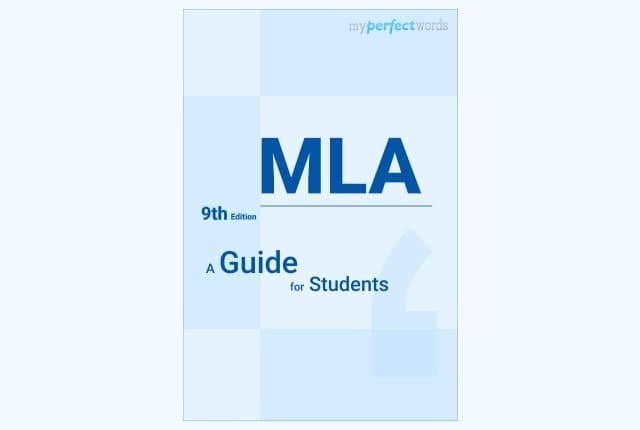
Understanding the APA Format: A Complete Guide with Examples
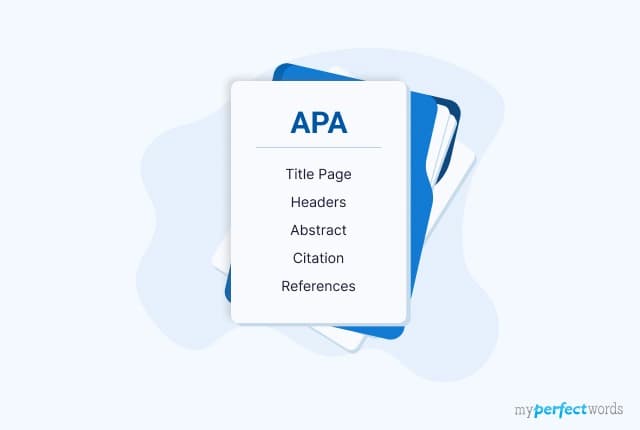
APA vs MLA | The Key Differences and Similarities

How to Cite in Chicago Style - Examples and Tips
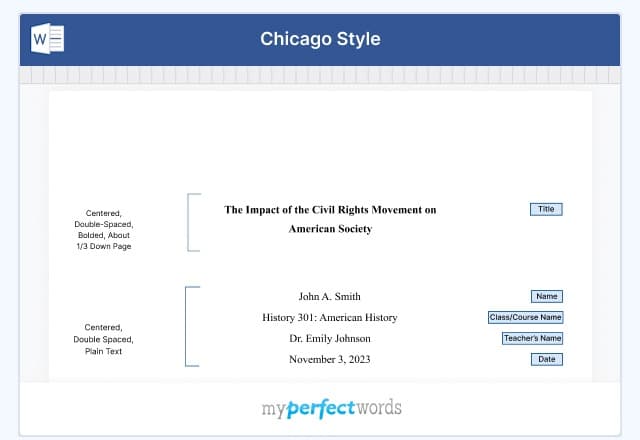
Learn IEEE Citation and Formatting With This Simple Guide

Mastering ASA Format: Guide to Proper Academic Writing
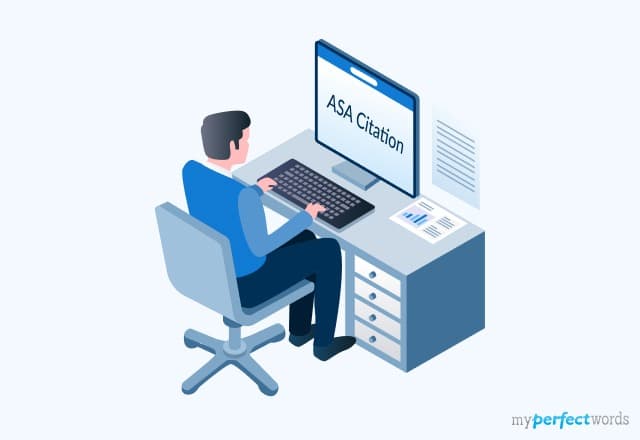
How to do Harvard Style Citation - Format, Citation and Samples
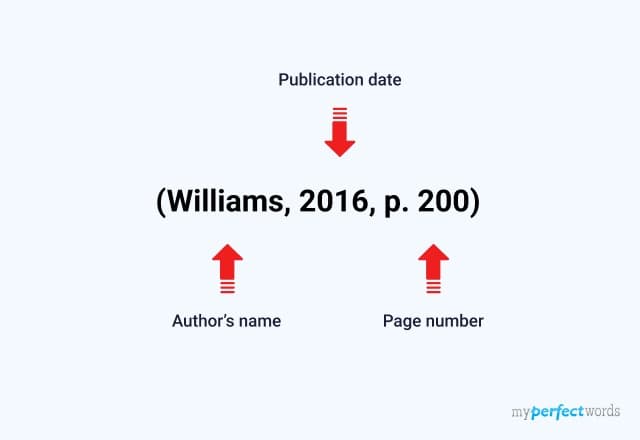
How to Cite in AMA Style - Formatting & Examples

A Detailed ACS Citation Manual for Scientific Papers

How to Master NLM Citation: A Detailed Guide With Tips

A Complete AAA Citation Guide with Examples
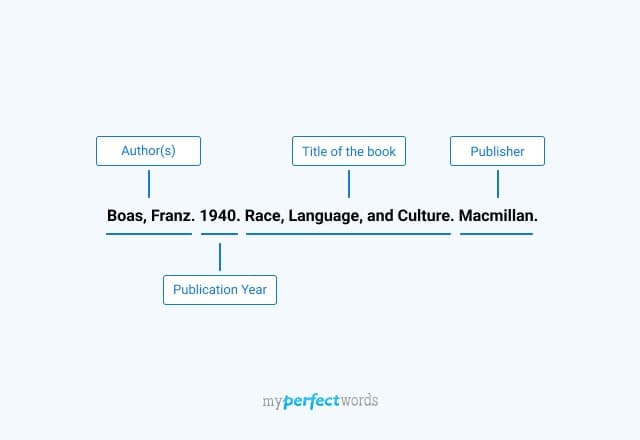
Simple APSA Citation and Formatting Guide for Students

